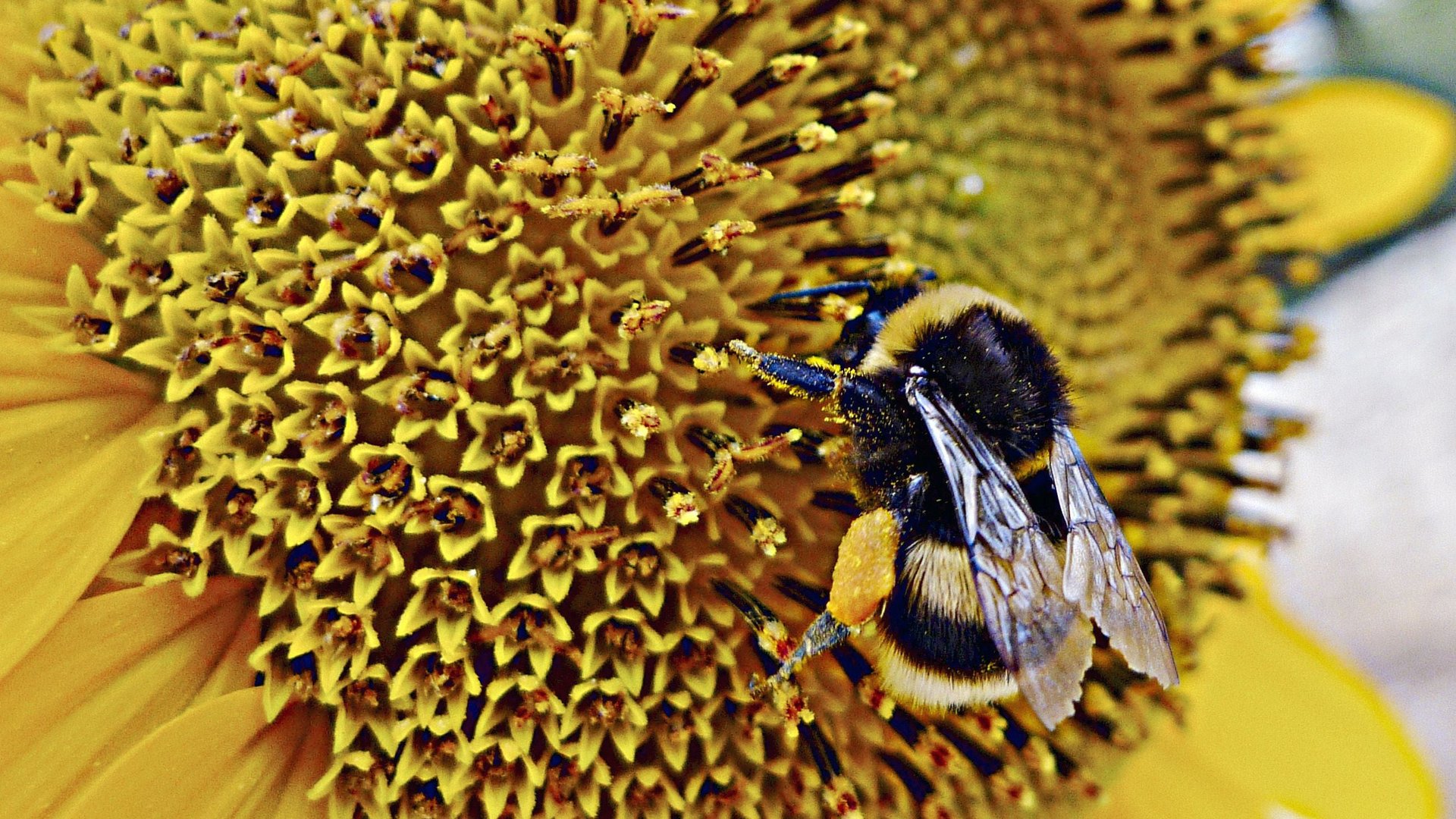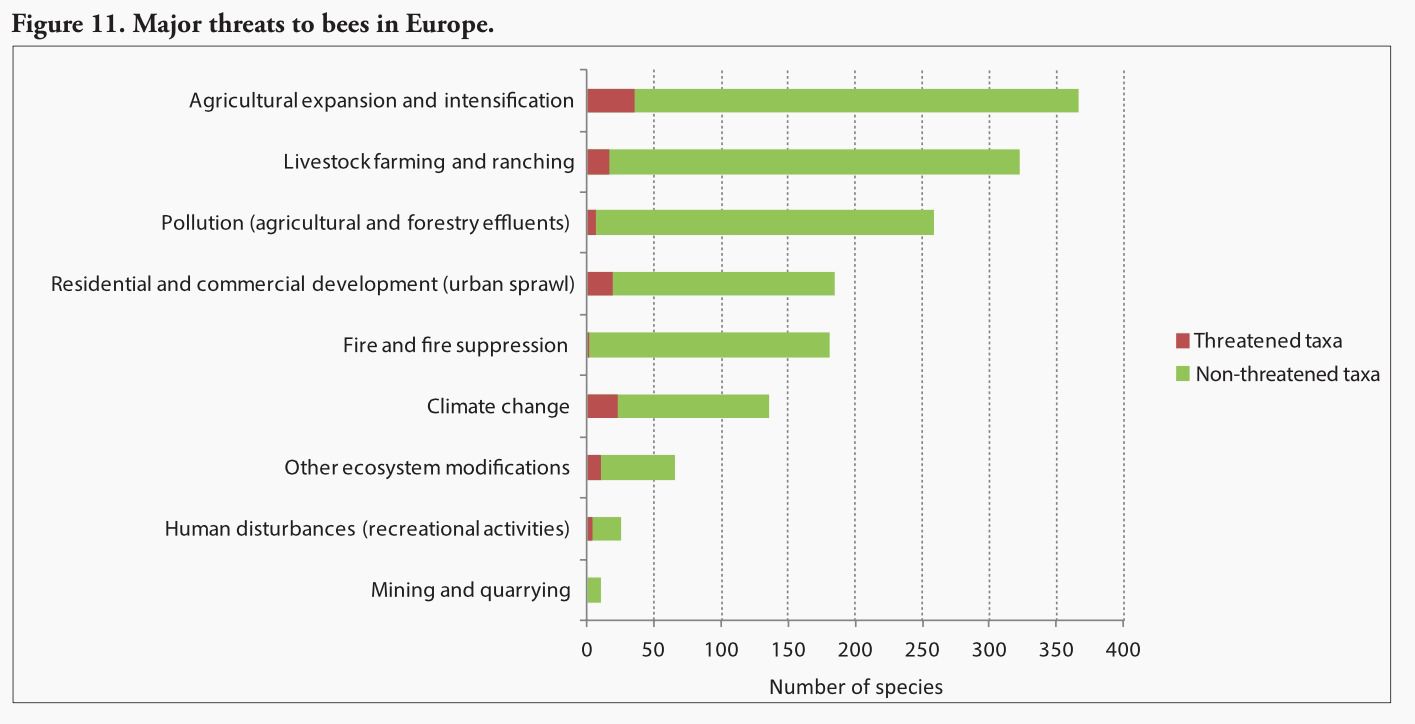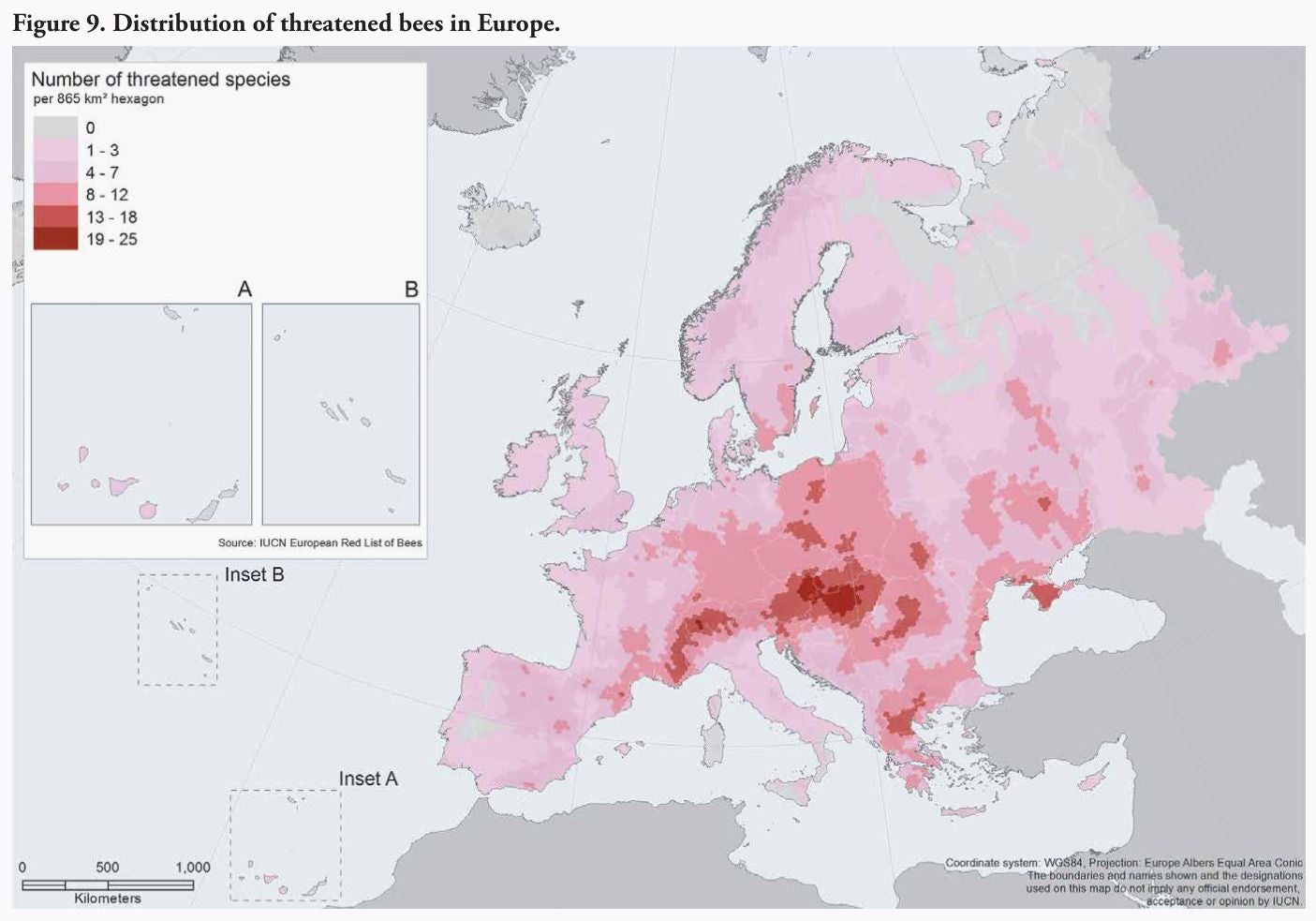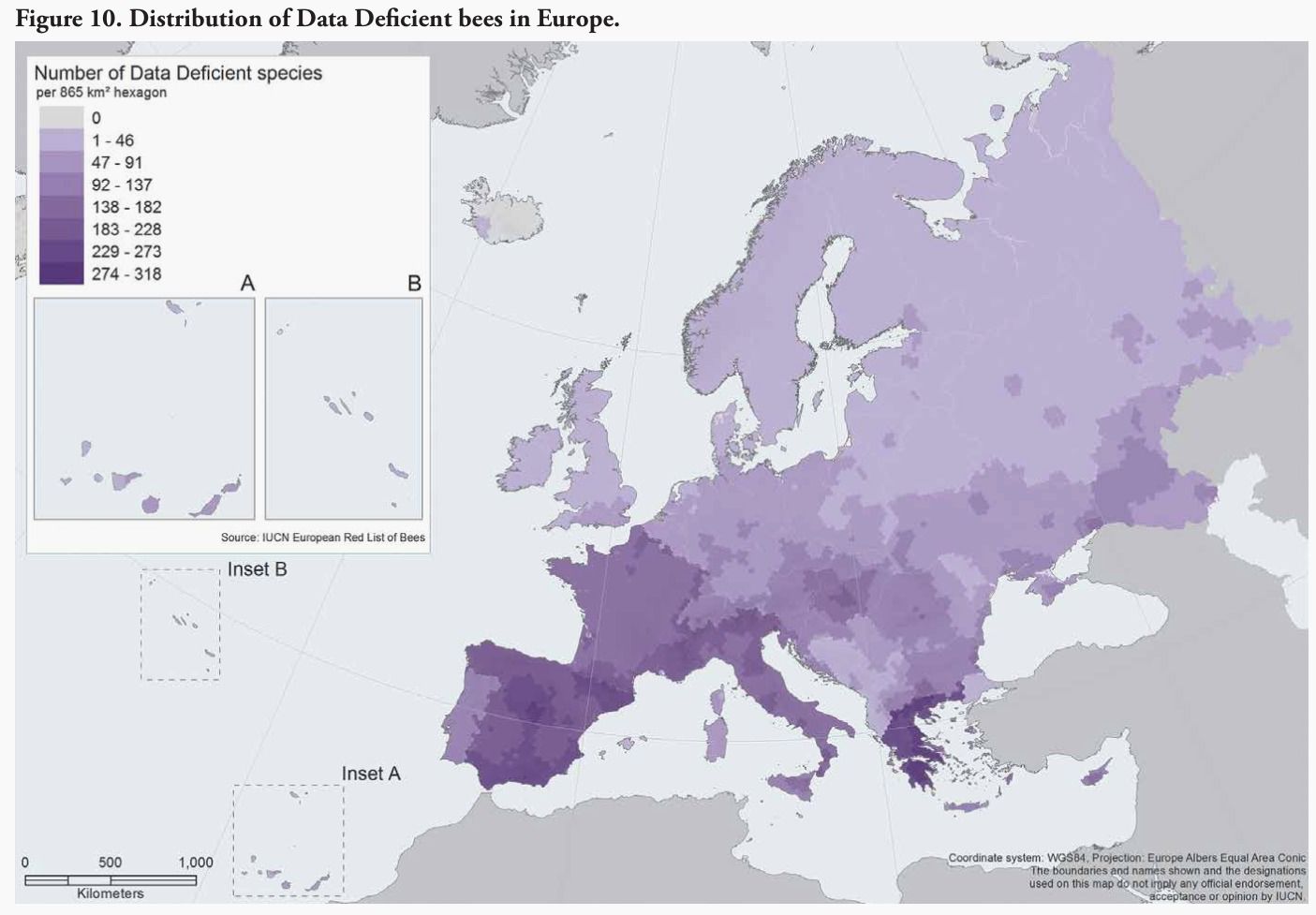One in 10 bees crucial to Europe’s ecosystem are threatened with extinction, and it’s only getting worse
Not much in life comes for free. Crop pollination courtesy of wild bees is one such rarity. Each year, the service they provide helping plants reproduce is worth billions of dollars in Europe alone. Around the world, a third of food people eat comes from plants pollinated by wild bees and other insects.


Not much in life comes for free. Crop pollination courtesy of wild bees is one such rarity. Each year, the service they provide helping plants reproduce is worth billions of dollars in Europe alone. Around the world, a third of food people eat comes from plants pollinated by wild bees and other insects.
But as often happens with free stuff, we’ve been taking wild bees for granted. In fact, at least 9.2% of Europe’s wild bee species now face extinction; another 5.2% will soon join them. That’s according to the International Union for Conservation of Nature’s first-ever assessment (pdf) of the region’s bee population.

No single factor is to blame for Europe’s bee blight. But if you wanted an umbrella category, it would be modern agriculture. The spread of large-scale farming—both of crops and livestock—is depriving more and more wild bees of their natural habitats. For instance, the population of once widespread bumblebee has fallen 80% in just a decade, as farmers razed clover-rich grasslands.

Evidence also suggests widespread use of pesticides, which scientists has linked with the collapse of domesticated honeybee colonies, also harms wild species. Flowering plants are vanishing all over Europe thanks to rising use of nitrogen-based fertilizers. Climate change, too, is increasingly upping the risk of extinction for many bee species. Here’s a map of where Europe’s most threatened bees are:

But bear in mind that the map above is skewed by the fact that data on more than half of Europe’s bee species were too scarce for the IUCN to assess their status.

That lack of data is why the 9.2% figure could actually be quite conservative. If all these data-deficient bees turn out to be doing just fine, only about 4% of Europe’s bees are threatened. If more research reveals that all of those jury’s-still-out bees are endangered, however, that means a whopping 60.7% of Europe’s bee population is grappling with extinction.
The cryptic status of such a huge chunk of Europe’s bee species makes it hard to craft effective conservation efforts. It’s a strange neglect given that the continent has long been one of the world’s cradles of bee civilization. Home to about a tenth of the planet’s 20,000 species—compared with 7% of its land habitats—Europe boasts an unusual amount of global bee diversity. (That’s in large part due to the continent’s balmy Mediterranean swath, which offers ideal bee climes.) And those wild bees are critical to the continent’s economy; pollination by bees—both wild and domesticated—is worth €22 billion annually in Europe alone, says the IUCN.